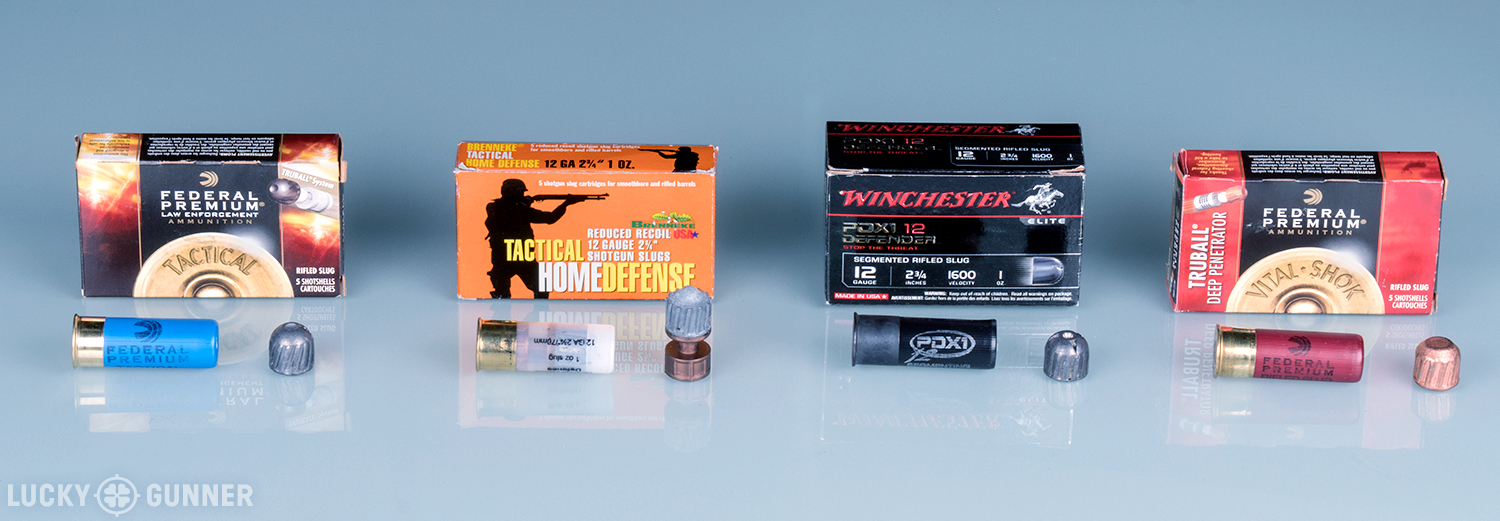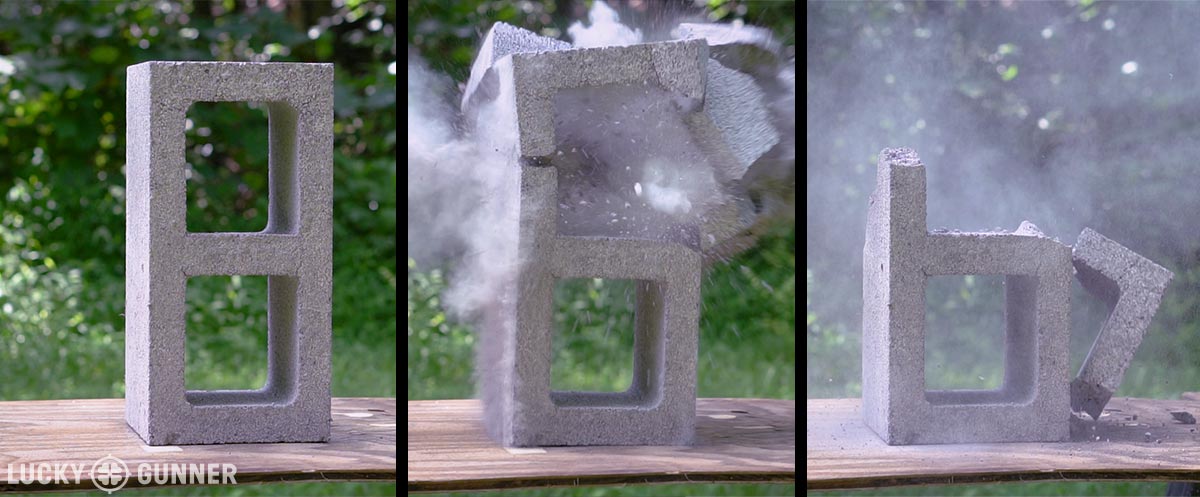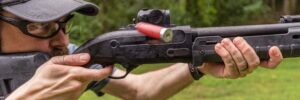For anyone interested in using a shotgun as part of their home defense plan, I typically recommend loading that shotgun with buckshot. A lot of people have asked about using slugs as an alternative, or maybe keeping a couple of slugs handy on a sidesaddle to complement the buckshot. So today I’m going to take a look at the shotgun slug and whether it might have a place in the context of home defense.
Watch the video below for more, or scroll down and keep reading for the transcript.
There are a number of different types of slugs but generally speaking, a shotgun slug is a shell that fires one big projectile instead of a bunch of smaller ones like birdshot or buckshot. Slugs are really useful if we need to extend the range of the shotgun or in situations where penetration is really important. 00 buckshot is the most common type of defensive shotgun ammo and it’s very effective up to about 25 yards. With a tight pattern, you can maybe stretch it out to 40 or 50. Beyond that, there are much better options.

A slug will extend the shotgun’s range to at least 75 or 100 yards. In situations where a rifle would be the ideal tool, but for whatever reason a shotgun is what you have instead, slugs can essentially turn that shotgun into a limited-range rifle. So if you think of your shotgun as a defensive tool you might use both inside and outside your home, like if you have a large property to take care of, having the option to use slugs might make sense.
If we need to punch through a barrier, a 12 gauge slug is one of the best tools we have available. This is really useful for law enforcement, because they often have to fight in and around cars, and a slug will penetrate right through a car body or windshield far more consistently than buckshot, or a handgun or a carbine.
Let’s bring it back to the context of personal protection for the average armed civilian. The shotgun is most commonly stored in the home, and its intended use is limited to, essentially, hallway distances. Unless you live in a very large house, I don’t think a slug offers any advantage over buckshot in that context. Buckshot is made specifically for short-range encounters like these. You need to stop somebody right now at very close range, and buckshot lets you shoot them 8 or 9 times with one press of the trigger. We don’t need the range or the penetration of the slug inside a home, and in fact, that can work against us.
Whether or not a slug hits the intended target, it can travel really far and go through a lot of stuff before it stops. It’s a huge liability because of its potential to sail through exterior walls and still have plenty of energy left over to kill somebody. Now, there are no magic bullets. Any projectile you can fire through a shotgun, rifle, or pistol that can physically disable an attacker will also penetrate through a couple of pieces of drywall or plywood. There’s no getting around that — interior wall penetration, in particular, is something we have to consider with any firearm or ammunition, a topic that Spencer explored a few weeks ago in this article. But the penetration of a slug is on a whole different level. We’re not only concerned about somebody who might be in another bedroom, but we could also be putting the whole neighborhood at risk.

Of course, buckshot also carries a risk of hitting unintended targets, not as much because of over-penetration, but because of the spread of the shot. I wouldn’t worry too much about having to take that tactical fantasy camp type hostage shot where the bad guy is ducking behind your family member and you can only see their eyeball. But it’s not unheard of for an armed citizen to be faced with a threat who is already in some kind of physical altercation with a family member. It might be a shot you’re confident you can make, but not if you’re worried about a stray pellet hitting the wrong person.
This is just one reason it’s really important to pattern the shotgun with our intended home defense load ahead of time. All that means is that we go to the range and shoot at a target to see what the spread looks like at various distances that match the distances inside our home. This is something you really have to do yourself because each individual shotgun barrel is a little different and no two guns are guaranteed to pattern the same way with a particular load.
You can probably find several loads that won’t spread much at all within typical home-defense distances, but if you want to minimize that spread there’s a little shortcut. Federal FliteControl and Hornady Critical Defense 00 buckshot are both made with a special wad that holds the pellets together after they exit the barrel, so with almost any gun, you will get a single 2 or 3-inch wide hole in the target at any distance up to about 10 yards — that’s 30 feet. If you think about the inside of your home, there probably aren’t many places where you’d have to take a shot longer than that. I have personally had better luck with getting tight patterns out of the 8 pellet version of the Federal FliteControl load compared to the Hornady buckshot, but you may get different results with your shotgun.
So even without a slug that can possibly exit our house at lethal velocities, the shotgun can still be used to make a precision shot at close range if necessary. Choosing the right buckshot load gives us the ability to quickly stop a threat in the home without endangering anyone else.
If you liked this article, be sure to check out the rest of our defensive shotgun series!




